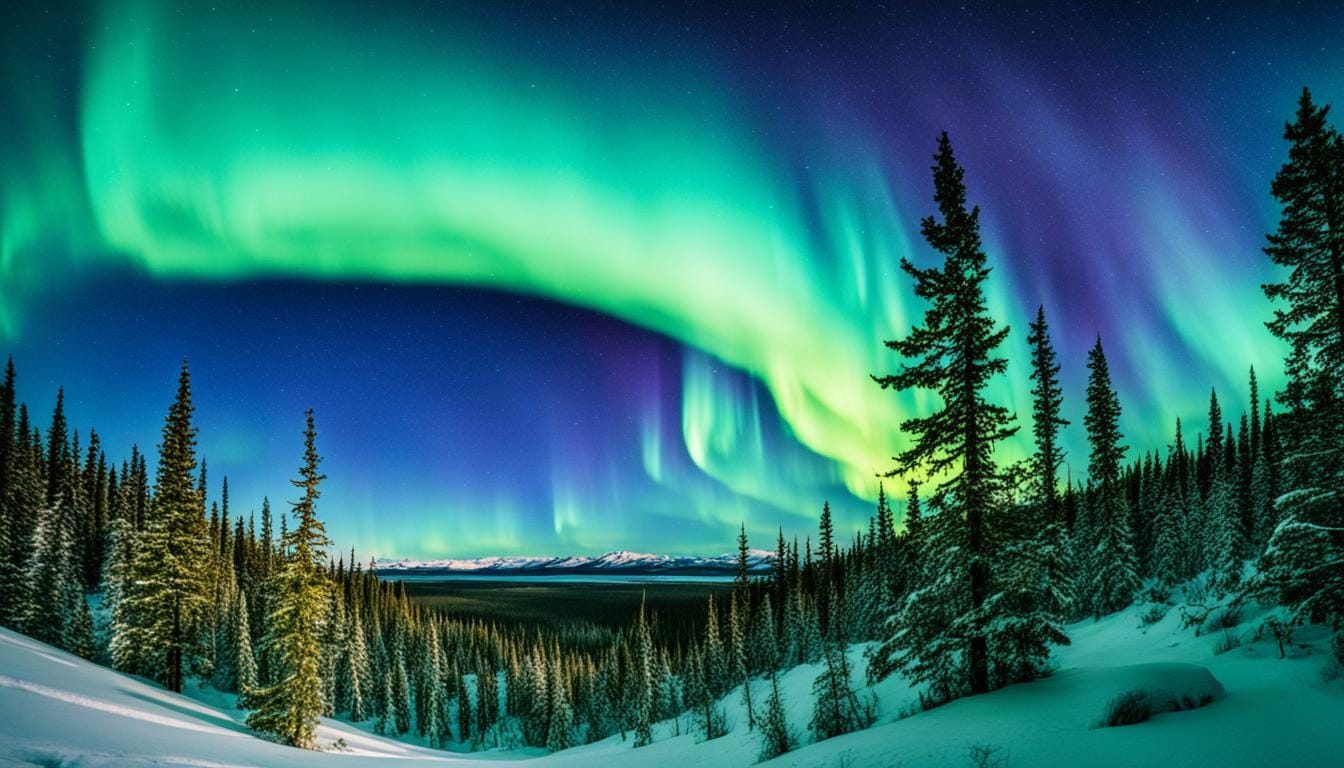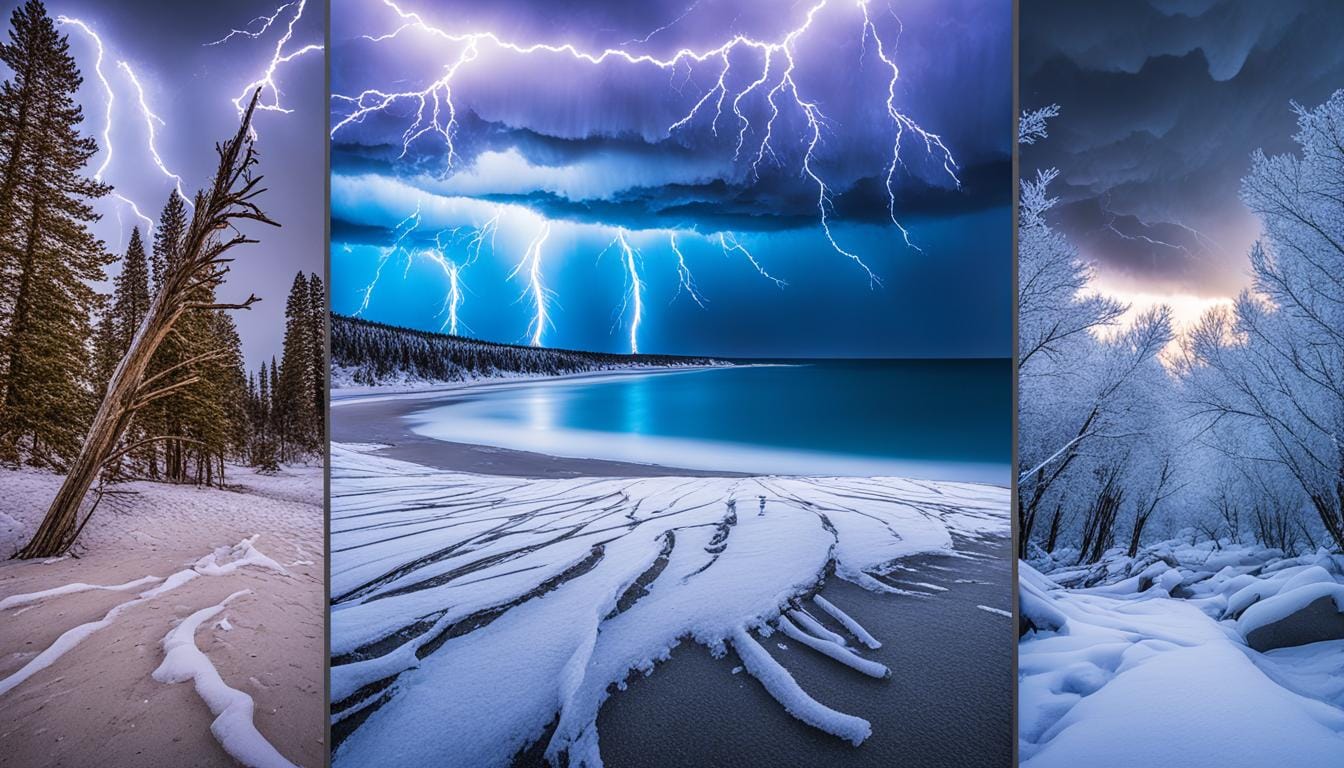Explore the world’s most stunning geological wonders that highlight Earth’s natural beauty and history. You’ll find everything from massive rock formations to deep canyons. These natural treasures will surely amaze you. Let’s dive into 10 geological wonders you can’t miss, like the Towering Crystal Caves of Naica and the Giant’s Causeway. You’ll also see the Grand Canyon’s layers, Kilauea volcano’s lava flows, and more. Prepare to be amazed by the incredible diversity of our planet’s geological features.
Towering Crystal Caves of Naica
Deep under the Naica mountain in Mexico, there’s a special place – the Cave of Crystals. It’s filled with huge crystals, the biggest in nature. These gypsum crystals can be up to 12 meters long and 4 meters wide.
These huge crystals formed over half a million years. Hot, mineral-rich water flooded the cave, letting the crystals grow big. Miners found the cave in 2000, and they were amazed by the huge, shiny crystals.
Visiting the Cave of Crystals is tough because of the heat and humidity. It gets up to 150°F in there, with almost 100% humidity. People can only go to the top because the lower parts are too risky.
Massive gypsum crystals in the Cave of Crystals, Mexico
The Cave of Crystals is a natural wonder. It shows how amazing the Earth can be. Scientists and explorers keep studying it, learning about its creation and life in extreme places.
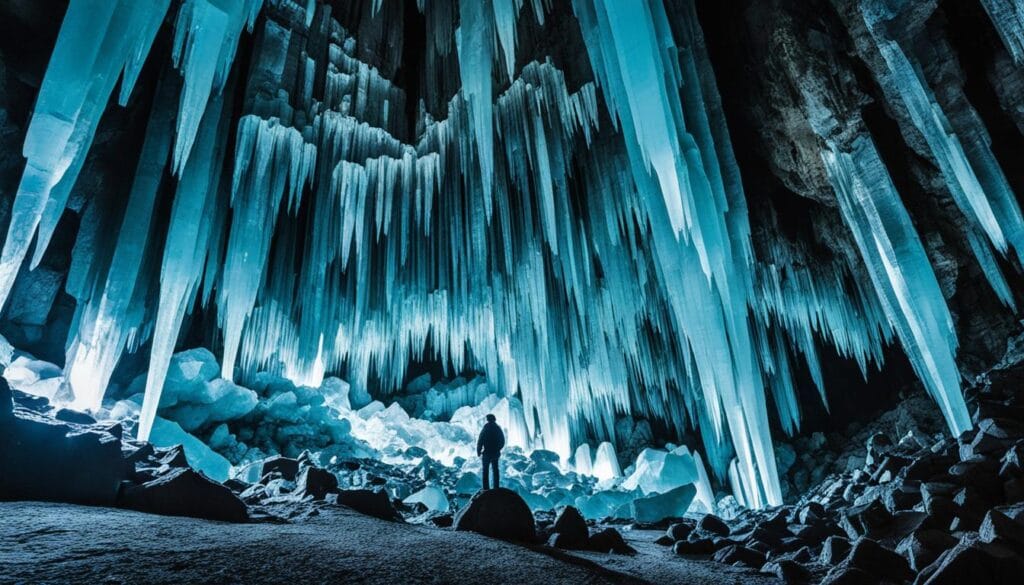
Monumental Uluru
Uluru, also known as Ayers Rock, is a massive 550-million-year-old sandstone formation in the Australian outback. This inselberg stands tall at 1,142 feet (348 meters) and has a circumference of 5.8 miles (9.4 kilometers). Over time, the rock has turned orange-red due to the oxidation of iron in its arkosic sandstone.
Uluru is more than just a stunning rock; it’s deeply meaningful to the Aboriginal people. It’s a sacred Aboriginal sacred site. Climbing it is now banned out of respect. Visitors can still explore the base and learn about the area’s unique ecology and history.
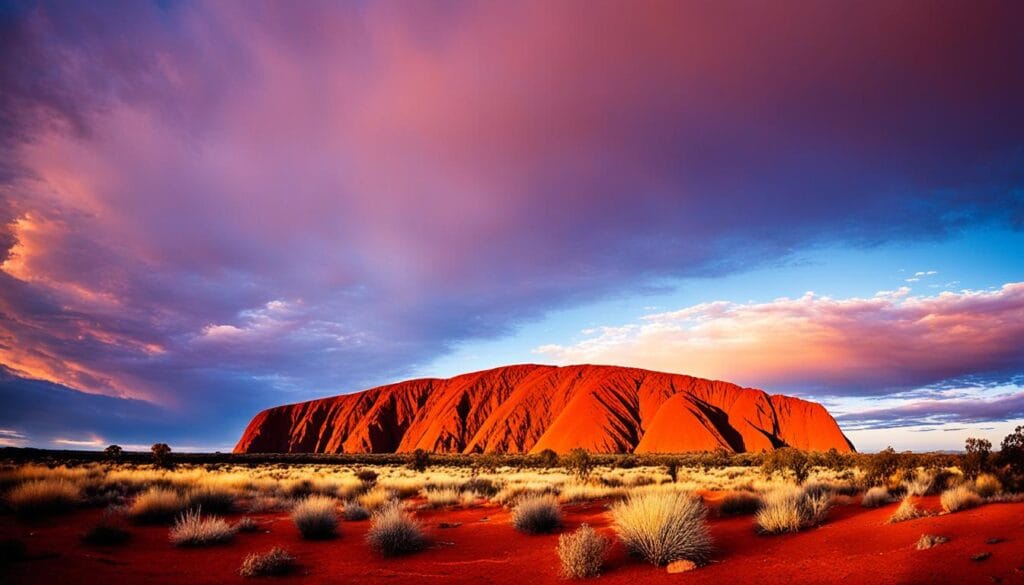
| Fact | Value |
|---|---|
| Height | 1,142 feet (348 meters) |
| Circumference | 5.8 miles (9.4 kilometers) |
| Age | 550 million years |
| Composition | Arkosic sandstone, quartz, feldspar, and other minerals |
| Color | Orange-red due to iron oxide oxidation |
Uluru’s size and color make it a top natural wonder. This ancient inselberg draws visitors worldwide. It shows off Australia’s rich geological and cultural history.
Giant’s Causeway
The Giant’s Causeway sits on the stunning Antrim coast in Northern Ireland. It’s a place that has amazed people for hundreds of years. It boasts over 40,000 basalt columns that formed when hot volcanic rock cooled and shrank millions of years ago.
This site is the only UNESCO World Heritage Site in Northern Ireland. It’s known for its stunning beauty and important geology. The basalt columns were made during a time of intense volcanism about 60 million years ago. This was when the North Atlantic Ocean opened, causing eruptions that left behind this amazing sight.
At the Giant’s Causeway, visitors can walk along the Antrim coast and see the unique rocks. You can hike on paths and see the famous Grand Causeway and Giant’s Boot. This place is a symbol of Northern Ireland’s beauty and wonder.
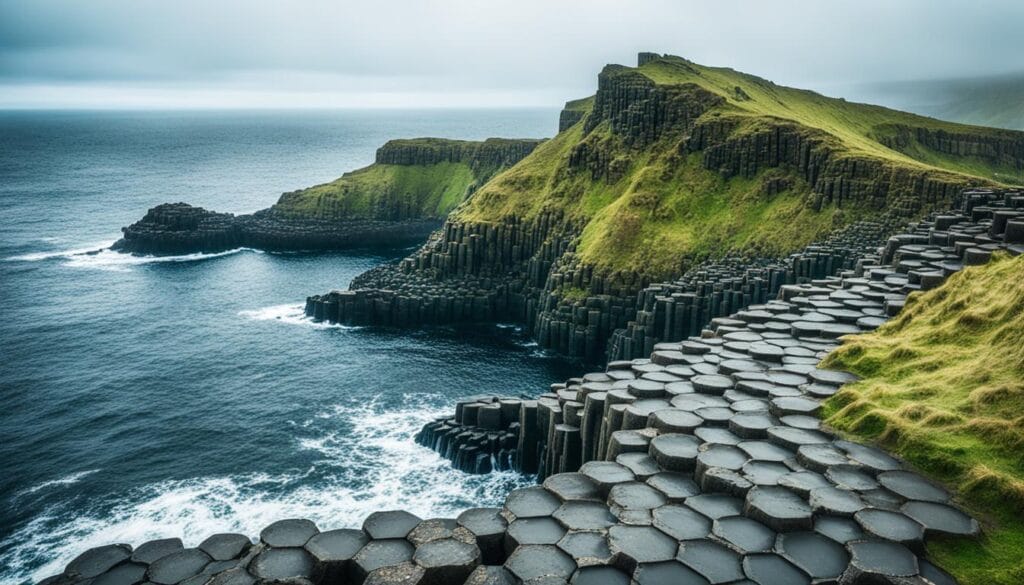
Every year, over 1 million people visit the Giant’s Causeway. It’s the top tourist spot in Northern Ireland. It attracts people from all over the world who want to see this incredible natural wonder. Whether you love geology, nature, or just beautiful views, the Giant’s Causeway is a place you must see. It will surely leave a lasting impression on you.
Grand Canyon Layers
The Grand Canyon in Arizona is a stunning geological wonder. It stretches 450 km long and reaches depths of up to 1.5 km. This massive canyon shows off a record of rock history that spans hundreds of millions of years.
At the canyon’s base, you’ll see rocks that are over 1 billion years old. As you go up the canyon walls, the rocks get younger, showing the sedimentary history of the area. This long sequence of rocks tells us about the Colorado River’s power over millions of years.
| Rock Layer | Age (million years) | Formation |
|---|---|---|
| Paleozoic Strata | 300 | Sedimentary rocks with fossils of ancient sea creatures |
| Grand Canyon Supergroup | 1,200 | Sandstone and mudstone from the late Proterozoic era |
| Metamorphic Basement Rocks | 1,700 | Oldest rocks at the bottom of the canyon, formed during the Proterozoic era |
The Grand Canyon has been studied a lot by geologists. It shows us the dynamic past of the area. From ancient rocks to newer ones, it tells us about the sedimentary rock history of the Colorado River basin.
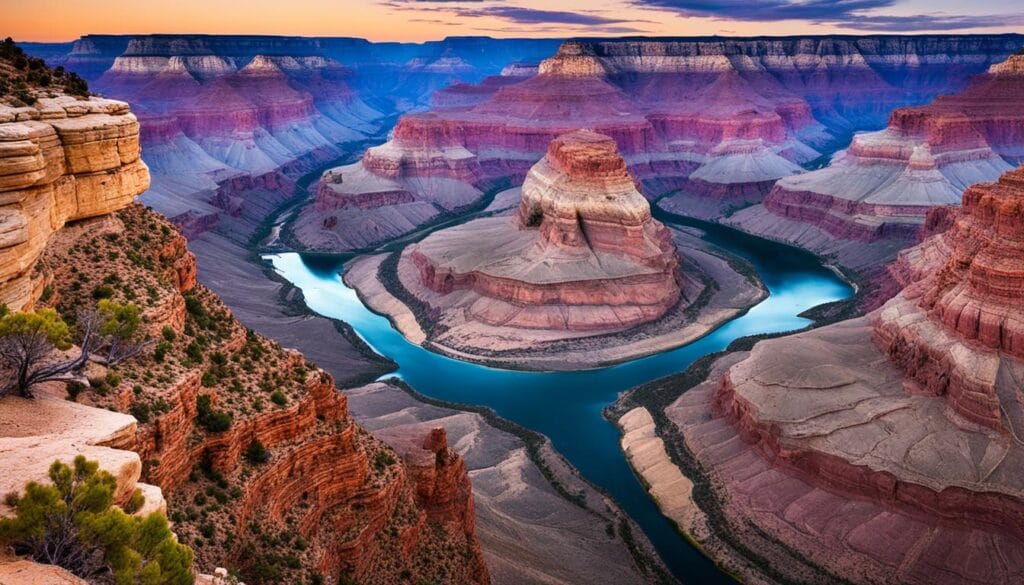
Kilauea’s Molten Lava Flows
Hawaii is home to some of the most active volcanoes, including Kilauea on the Big Island. The Pacific tectonic plate moves over a hotspot, creating new islands. Kilauea is a key volcano, erupting often and adding to the island with effusive pāhoehoe and ʻaʻā lava flows.
Unlike explosive volcanoes, Hawaii’s shield-type volcanoes have slow-moving lava flows. These flows let visitors see new land being formed.
The Pu`u `O`o eruption was huge, with over 4 km3 of lava. It covered more than 120 sq km of the volcano’s south flank. Over 230 hectares of new land were added to the island as lava met the Pacific Ocean.
But, the eruption also caused damage. It destroyed 189 houses, a Visitor Center, a church, a store, the Waha’ula Heiau, and other ancient sites.
The lava reservoir under Pu`u `O`o was huge, stretching 1.6-km long, 2.6-km deep, and 3-m wide. Lava production was steady, between 300,000 to 600,000 m3/day. The eruption lasted over 35 years by January 2018, making it the longest at Kilauea.

Hawaii Volcanoes National Park was created on August 1, 1916. It covers 323,431 acres and welcomes about 2 million visitors a year. The park lets people see the amazing process of new land being made. It shows the power and beauty of Kilauea, one of the world’s most active volcanoes.
Geological Wonders
Our planet is full of amazing geological wonders. You can find everything from huge rock formations and deep canyons to volcanic landscapes and old cave systems. These sights show us the power of nature, like erosion, tectonic plate movement, and volcanic activity. They’ve been shaping our Earth for millions of years.
Places like the Cave of Crystals in Mexico and the Giant’s Causeway in Northern Ireland show us the Earth’s history. They let us see how our world has changed over time. Sites like Uluru in Australia and the Grand Canyon in the United States are also breathtaking. They show us the beauty of nature.
From the beautiful molten lava flows of Kilauea volcano in Hawaii to the stunning rainbow mountains of the Zhangye Danxia Landform in China, our planet is diverse. By visiting these geological marvels, we learn more about the Earth’s geomorphology and tectonic plate movements. These have shaped our planet over millions of years.
| Geological Wonder | Location | Unique Features |
|---|---|---|
| Cave of Crystals | Chihuahua, Mexico | Contains gypsum crystals up to 12 meters long and 4 meters wide, some of the largest crystals ever discovered. |
| Uluru | Australia | 550 million-year-old isolated rock, extending 5-6 km below the surface and tilted by 90° since its formation. |
| Giant’s Causeway | Northern Ireland | Over 40,000 basalt hexagonal columns formed by cooling volcanic rock, creating a unique geological site. |
| Grand Canyon | Arizona, USA | 450 km long and up to 1.5 km deep, representing a geological record spanning hundreds of millions of years. |
| Kilauea Volcano | Hawaii, USA | One of the most active volcanoes, known for its slow-flowing pāhoehoe and ʻaʻā lava flows. |
These geological wonders are just a few examples of the amazing natural landscapes on our planet. From huge rock formations to volcanic landscapes and old cave systems, our Earth shows the power of geomorphology and tectonic plate movements. By exploring these geological marvels, we learn more about the forces that shape our world.
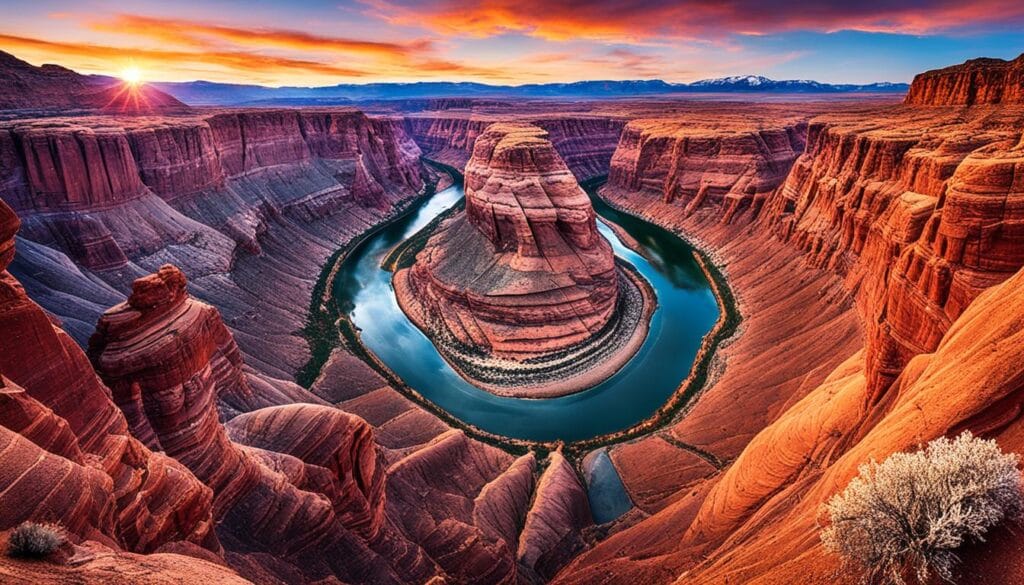
Zhangye Danxia Landform
In the Gansu Province of northwestern China, the Zhangye Danxia Landform is a stunning sight. It’s known as the “rainbow mountains.” This UNESCO World Heritage Site shows off vibrant, layered rock formations shaped by erosion over millions of years.
This landform spans about 510 square kilometers (197 square miles). It’s a huge and amazing geological site. The rocks are mostly sandstone and siltstone. Their colors come from minerals like iron oxide, chlorite, and goethite.
A Vibrant Palette of Nature’s Artistry
The colors of Zhangye Danxia range from deep reds to vibrant yellows, greens, and blues. These colors come from its geological past. Over 24 million years, sand accumulated in a marine setting, mixing with minerals to create this colorful landscape.
The core of the landform, the Linze Danxia Scenic Area, is the most visited part. In 2005, it was named one of China’s most beautiful Danxia landforms. In 2009, it was picked as one of the “six most beautiful landforms” in the country.
Visitors can see the landform on well-kept paths and platforms. These offer amazing views of the landscape. Geologists and researchers also come to study this unique natural wonder.
| Key Facts about Zhangye Danxia Landform | Statistics |
|---|---|
| Total Area of Zhangye National Geopark | 322 square kilometers (124 sq mi) |
| Area of Binggou Scenic Area | 300 square kilometers (120 sq mi) |
| Formation Timeline | Over 24 million years |
| Year Recognized as UNESCO World Heritage Site | 2009 |
| Investment in Binggou Area Enhancements | 100 million yuan (in 2014) |
The Zhangye Danxia Landform is a true marvel of nature. It shows the power of nature and the beauty of eroded sedimentary rock. This unique and colorful landscape draws visitors from all over the world. They come to see the breathtaking “rainbow mountains” of Gansu Province, China.
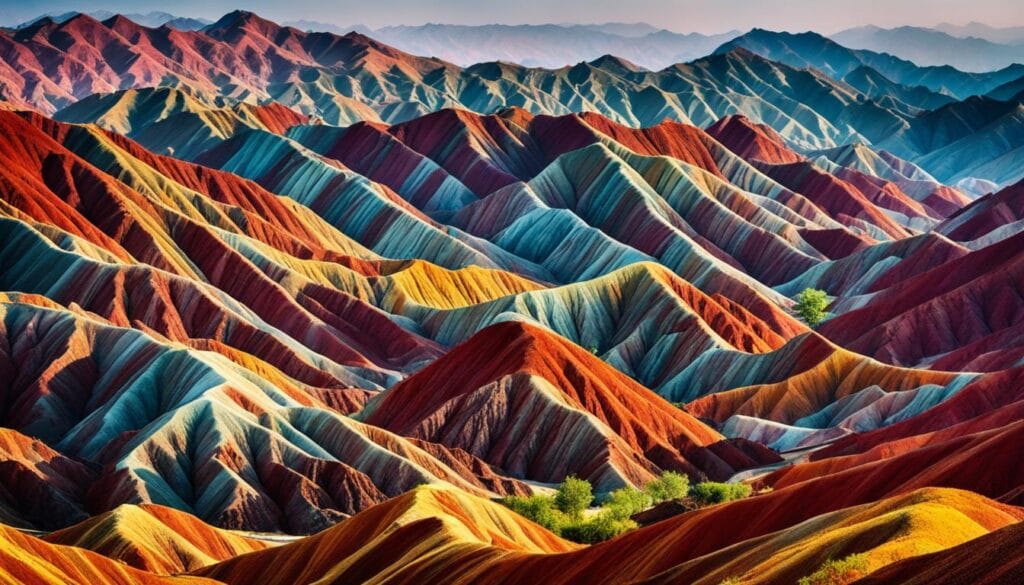
Mammoth Hot Springs
Yellowstone National Park is famous for its amazing geothermal features, like the Mammoth Hot Springs. These springs get their power from a shallow magma source under the park. This is part of the big Yellowstone supervolcano system. Over time, Yellowstone has had huge eruptions, but now it has smaller eruptions and geyser activity. This lets visitors see the park’s lively geology safely.
The Mammoth Hot Springs are known for their beautiful terraced, travertine formations. Yellowstone sits on top of one of the world’s biggest active volcanoes, stretching 30 by 45 miles. It also has over 10,000 hydrothermal features, making it the most active geothermal system on Earth.
At Mammoth Hot Springs, there are about 50 hot springs across two terraces. The Upper Terrace Area has Canary Springs, a main attraction with stunning views. Canary Springs can change color, often showing red but sometimes blue or green.
People can walk or drive through the Upper Terrace Loop to see the hot springs. Mammoth Hot Springs is a dream for photographers, with its unique landscape and many springs. It’s perfect for spending a whole day exploring.

| Geothermal Feature | Description |
|---|---|
| Liberty Cap | A 37-foot-tall formation in the Lower Terrace area, created over hundreds of years. |
| Devils Thumb and Palette Springs | Highlighted features in the Lower Basin Area of Mammoth Hot Springs. |
| Canary Springs | The main attraction of the Upper Terrace Area, known for its color-changing abilities. |
Wave Rock
See the amazing Wave Rock, a natural wonder that will amaze you. This huge rock has been shaped by erosion over millions of years. It stands tall, nearly 100 meters long, and 15 meters high.
The rock looks like a wave because of erosion. The lower part of the rock wore away faster than the top. This created its unique, curved shape.
Geologists say Wave Rock started forming over 100 million years ago. It’s part of the Yilgarn Craton, which is over 2.8 billion years old. This makes Wave Rock a true ancient wonder.
At Wave Rock, you can walk around the rock or explore trails nearby. Photographers love it for its changing colors and textures. Every year, over 100,000 people visit, making it a top spot in Western Australia.
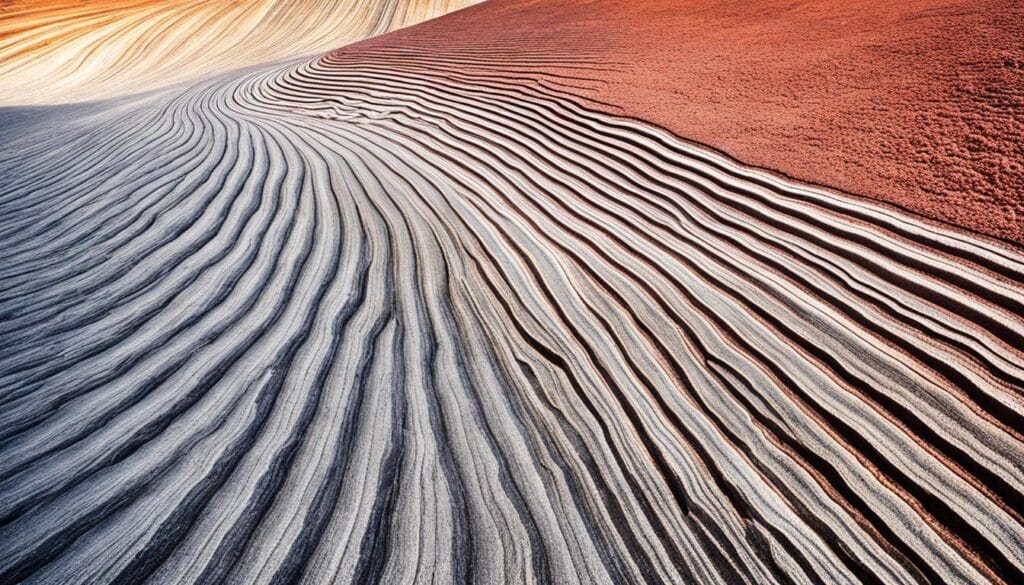
If you love geology or nature, you’ll be amazed by Wave Rock. It’s a place that shows the power of erosion. Consider adding it to your travel plans to see it for yourself.
Moeraki Boulders
The Moeraki Boulders sit on the beautiful Koekohe Beach in New Zealand. They are a fascinating geological wonder. These boulders are huge, round, and made of cemented sedimentary rock. They formed over 4 million years ago.
Thanks to erosion, these unique, ball-like rocks are now on the beach. They weigh up to 15,400 lbs (7 tonnes) and can be over 9 feet wide (3m).
These spherical boulders started as small nodules around 60 million years ago. They formed from sediment and calcite around organic centers. Weathering has worn away some layers, showing off their beautiful patterns and mineral deposits.
At the Moeraki Boulders Scenic Reserve, visitors can see these amazing rocks at low tide. This place shows how nature can make beautiful, symmetrical shapes.
The Moeraki Boulders are on Koekohe Beach, 78 kilometers (48 miles) north of Dunedin and 40 kilometers (25 miles) south of Oamaru. It’s best to visit during low tide for the best view.
Tsingy de Bemaraha
In the heart of Madagascar lies the Tsingy de Bemaraha National Park. It’s a place where erosion has shaped the Earth in amazing ways. This “stone forest” has taken millions of years to form, thanks to wind, water, and time.
The park spans about 1,520 square kilometers (590 square miles). It’s divided into two main areas: the Great Tsingy and the Little Tsingy. The Great Tsingy’s limestone peaks can go as high as 50 meters (165 feet), making the landscape look like nothing on Earth.
This unique area was made by water full of carbon dioxide dissolving the limestone. This created underground tunnels, caves, and holes. Rain, wind, and chemical weathering then shaped the limestone into the unique “trees” and spiky formations we see today.
Since 1990, the Tsingy de Bemaraha has been a UNESCO World Heritage Site. It’s a place where many plants and animals live, many of which are only found in Madagascar. Visitors can hike through the park and see the incredible geological features up close.
If you love geology or just enjoy nature’s beauty, the Tsingy de Bemaraha is a place you must visit. It shows how erosion can create such amazing landscapes. It’s a reminder of the Earth’s strength and beauty.
Pamukkale Travertines
In the heart of Turkey, a stunning natural wonder awaits – the Pamukkale Travertines. This site is famous for its white terraces, formed over thousands of years by hot spring deposits.
Pamukkale means “cotton castle” in Turkish. It’s a UNESCO World Heritage Site, drawing visitors from all over. The terraces, made of mineral-rich water, flow down the hillside. They create a breathtaking, crystal-like landscape.
The hot springs here are full of calcium carbonate. As the water flows, it leaves behind calcium carbonate. This builds the white terraces that make Pamukkale so unique.
The terraces stretch 2,700 meters long, 600 meters wide, and 160 meters high. They’re a famous Turkish landmark and a top spot for nature lovers.
At Pamukkale, you can see the travertine terraces and feel the warm hot springs. It’s a place where nature and culture meet, offering a unique experience for travelers.
Petrified Forest National Park
In northeastern Arizona, the Petrified Forest National Park is a geological wonder. It’s famous for its vast amounts of petrified wood. These are the fossilized remains of ancient trees from the Late Triassic Period, millions of years old.
Over 200 million years ago, the area was covered in lush forests. These trees turned to stone over time, keeping their detailed structures. Erosion has revealed these logs and stumps, showing us the Earth’s ancient past.
The park has many geological wonders. The Rainbow Forest is full of colorful petrified wood. The Crystal Forest shows off quartz crystals that formed over thousands of years. The Agate House, made from petrified wood, shows how the ancient Puebloan people lived here.
There’s more to the park than just petrified forests. It has a rich cultural history and many plants and animals that have adapted to the dry land. Guided tours by park rangers teach visitors about the geology, paleontology, and human stories of the park.
If you love geology, history, or the natural world, you must visit the Petrified Forest National Park. Exploring this place takes you back in time. You’ll see the incredible ways the Earth has changed over millions of years.
| Fact | Statistic |
|---|---|
| Petrified wood fossils in Petrified Forest National Park date back to the Late Triassic Period | Some over 200 million years old |
| The Late Triassic Period lasted from approximately | 252 to 201 million years ago |
| Giant logs in the park measure | Over 35 feet in length |
| The Agate House, an ancient pueblo within the park, was built | Over 700 years ago by the ancestral Puebloan people |
| The Petrified Forest National Park covers an area of | 146 square miles (380 square kilometers) |
Conclusion
The Earth’s geological wonders show us the amazing forces that have shaped our planet over millions of years. From the Giant’s Causeway’s tall rock formations to Kilauea Volcano’s flowing lava, these places highlight the Earth’s ongoing changes. These changes come from erosion, tectonic plates moving, and volcanoes.
By visiting these wonders, we learn more about our planet’s diversity and beauty. The Grand Canyon’s layers tell us about Earth’s history. The Crystal Caves of Naica and Petrified Forest National Park show us the strong forces that have changed the Earth.
Places like the colorful Zhangye Danxia Landform in China, the stunning Uluru in Australia, and the mysterious Moeraki Boulders in New Zealand amaze us. Each wonder shows the beauty and complexity of our world. By keeping these places safe, we make sure future generations can also enjoy and learn from them.

